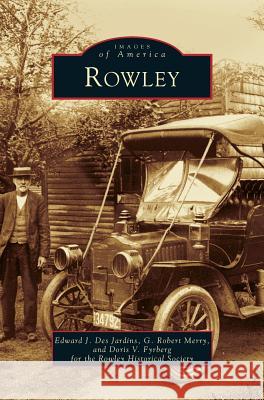Rowley » książka
Rowley
ISBN-13: 9781531606947 / Angielski / Twarda / 2002 / 130 str.
As one of the earliest settlements in America, Rowley was founded by Rev. Ezekiel Rogers in 1639. Few towns as small in population have given more to the nation than Rowley, with so many firsts making up its history-from the great Puritan migration voyage across the sea that Rogers shared with the nation's first printing press to Lorenzo Bradstreet's invention of the Bradstreet Sleeper, which later evolved into the Pullman sleeping car.Rowley has much to offer: scenes of the village, and the historic town common, or the "Training Place," where Benedict Arnold's expedition to Quebec encamped in 1775, the picturesque Glen Mills area with its 1642 stone arch bridge, and the site of the first fulling mill in the colonies (1642-1643), which manufactured the first cloth made in the Western world. The book displays images of country stores, wagon peddlers, and early gristmills and sawmills. It also shows shoe manufacturing, boatbuilding (at its peak in 1900), farming, and salt marsh haying. It truly brings to life another era in American history.
As one of the earliest settlements in America, Rowley was founded by Rev. Ezekiel Rogers in 1639. Few towns as small in population have given more to the nation than Rowley, with so many firsts making up its history-from the great Puritan migration voyage across the sea that Rogers shared with the nations first printing press to Lorenzo Bradstreets invention of the Bradstreet Sleeper, which later evolved into the Pullman sleeping car.
Rowley has much to offer: scenes of the village, and the historic town common, or the "Training Place," where Benedict Arnolds expedition to Quebec encamped in 1775, the picturesque Glen Mills area with its 1642 stone arch bridge, and the site of the first fulling mill in the colonies (1642-1643), which manufactured the first cloth made in the Western world. The book displays images of country stores, wagon peddlers, and early gristmills and sawmills. It also shows shoe manufacturing, boatbuilding (at its peak in 1900), farming, and salt marsh haying. It truly brings to life another era in American history.











